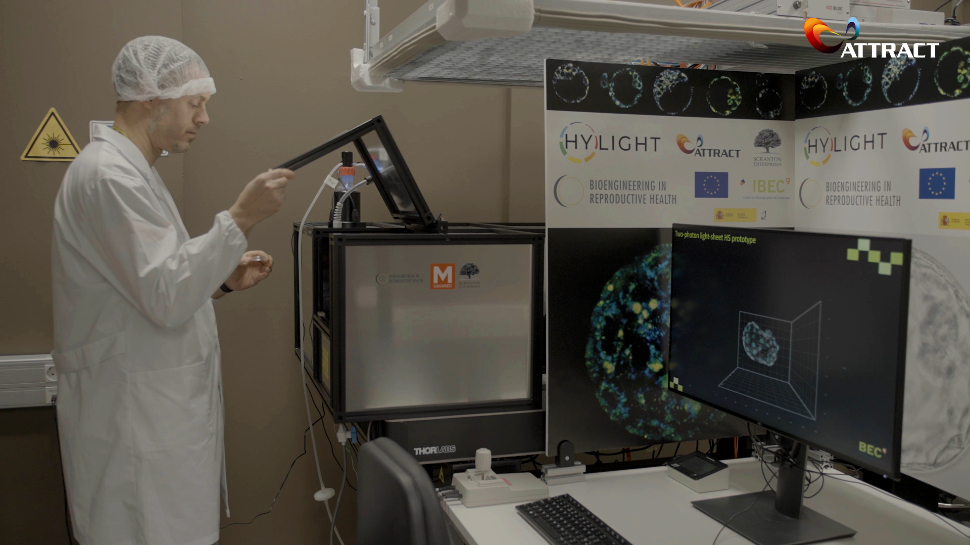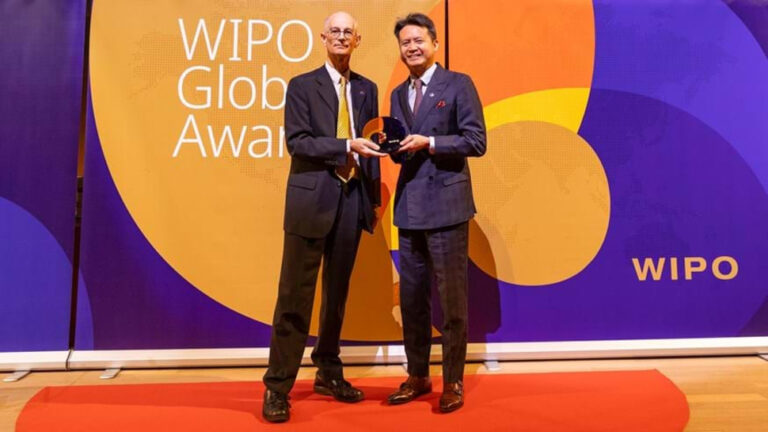In Europe, subfertility affects 1 out of every 7 couples, leading many to turn to in vitro fertilization (IVF) treatments in hopes of conceiving. However, the journey through IVF is fraught with challenges, as success rates hover around a mere 30%, leaving women and couples dealing with emotional, physical, and financial strains after repeated unsuccessful attempts.
The HYLIGHT project represents a paradigm shift in IVF treatments, offering a non-invasive yet highly effective method for selecting the most viable embryos. Combining hyperspectral analysis with artificial intelligence, the diagnostic device allows embryo classification based on their metabolic profiles, leveraging the natural auto-fluorescence of key cellular compounds like NADH or FADH. By accurately classifying embryos based on their metabolic signatures, this device not only streamlines the embryo selection process but also minimizes potential harm, ushering in a new era of IVF.
Collaborating with M-Squared and DEXEUS, HYLIGHT aims to improve IVF outcomes, offering hope to struggling couples. Get to know more about this project in this interview with Samuel Ojosnegros, coordinator of HYLIGHT.
What is your personal and career journey so far?
I did my bachelor’s in Barcelona in biology. Then I moved to Madrid to do my PhD. I was working with viruses at the time. Then I learned some mathematics when I joined a postdoc group at ETH Zurich. Then I did my second postdoc in Caltech. And over there I combined my mathematics and physics background with my biology background. That’s what I learned to do Hyperspectral imaging which I’m now applying in the Open Innovation Lab at IBEC where I’m the Head.
What is the project about? And which partners are involved?
Our project is about developing a new diagnostic tool in the reproduction field. It’s meant to develop a medical device that will allow embryologists in IVF clinics to discriminate, which are the best embryos for transfer. The partners in this project are the Dexeus In Vitro Fertilization clinics, a pioneer clinic in Barcelona and Europe, and M-squared Lasers Limited a laser and microscope manufacturing company in the UK and Germany.
What challenges have you faced so far?
The main challenge in this project is technological. We need to develop a medical device that is able to extract hyperspectral information from the embryo without damaging it. So, to do this in a non-invasive way, we combine near-infrared light, which is very safe for the embryo with light-sheet technology, which is the fastest and the more gentle and less phototoxic kind of microscopy that you can do to a biological sample.
How would you explain the potential implications of this breakthrough to a non-scientific audience?
In a normal IVF (In vitro fertilization) cycle a patient needs to undergo hormonal treatment and surgery, both very invasive procedures. However, the technique is not very efficient as only 30% of the embryos obtained managed to implant and the woman delivers to term. So, to make that technique more efficient, we need better diagnostic tools that can discriminate which is the most competent embryo, and that’s the solution that we provide with our technology.
How do you think society will benefit from this project?
We have done some market studies and discussed them with IVF clinics, and they believe that if we manage to make IVF more efficient, they will be able to treat more patients. We found out that there is a big sector of the population that would like to access IVF treatment but cannot do it due to budget limitations. So, if we make IVF more efficient and bring down the cost, what we will get therefore is a democratization of IVF.


